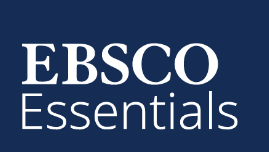Performance According to the Performance Standards of School Network Teachers Mueang, Buengkan
Keywords:
Competency according to the performance standards, school networkAbstract
The objectives of this study were. - 1) to study the level of competency according to the performance standards of teachers in the school network in Muang Buengkan district; 2) to ompare the performance according to the performance standards of teachers in the network of schools in Mueang Buengkan district. Classifed by academic position and work experience, the sample consisted of 163 teachers working in Buengkan Province during the 2021 academic year, obtained by multistage randomization. The research tools were questionnaires and statistical analyzes including frequency, percentage, mean, standard deviation and two way ANOVA. The results showed that.- (1) Competency according to the performance standards of teachers was at a high overall level ( = 4.29, S.D = 0.85). At the highest level, one aspect and the other two sides were at a high level. The averages were sorted from high to low as
follows: frst was teacher performance ( = 4.64, S.D = 0.55), followed by learning management (
= 4.37, S.D = 0.64), and relationship with parents and community (
= 3.85, S.D = 0.99).
(2) Teachers with academic positions and experience in different educational institutions were competent according to the performance standards of teachers in the school network group in Mueang Buengkan District Buengkan Province and there was no difference amongst overall standards and in each aspect.
References
Boonphirom, S. (2014). Self actualization for teachers. Trible Education.
Charoensuk, P. (2016). The state of the teachers performance according to traditionally professional standard in basic school under the secondary Educational Service Office Area 33. Sikkha Journal of Education, 3(1),1-8.
Heman, N. & Siriratanajit, A. (2016). A comparison of student-centered classroom management’s capacity by faculty members in Hat Yai University. Journal of Library Science SWU, 9(1), 45-56.
Krejcie, R. V. & Morgan, D. W. (1970). Determining sample size for research activities. Educational and Psychological Measurement, 30 (3), 607-610.
Office of the Secretariat of the Teachers Council of Thailand. (2005). Regulations of the Teachers’ Council on Professional Standards and Professional Ethics. Teachers Council of Thailand Ladprao.
Office of the Secretariat of the Teachers Council of Thailand. (2019). Regulations of the Teachers Council of Thailand on Professional Standards (No. 4) B.E. 2562 (2019). Teachers Council of Thailand Ladprao.
Sukuan, S. (2020). A study of teachers’ functional competency in the 21st century of Ranakhonsiayuttaya primary educational service area off. Panya Journal, 27(2 ), 63-71.
Teachers Council of Thailand. (2007). Laws relating to the practice of education, Vol. 1:National Education Act, B.E. 2542 (1999) and amended, No. 2, B.E. Teachers Council of Thailand.
Unyos, K. (2018). Teachers’ performance based on teacher professional standard principals in teacher practices in schools under Bangkok Primary Educational Service Area Office. Graduate School Journal Suan Dusit University, 14(1), 161-175.
Downloads
Published
Issue
Section
License

This work is licensed under a Creative Commons Attribution-NoDerivatives 4.0 International License.





